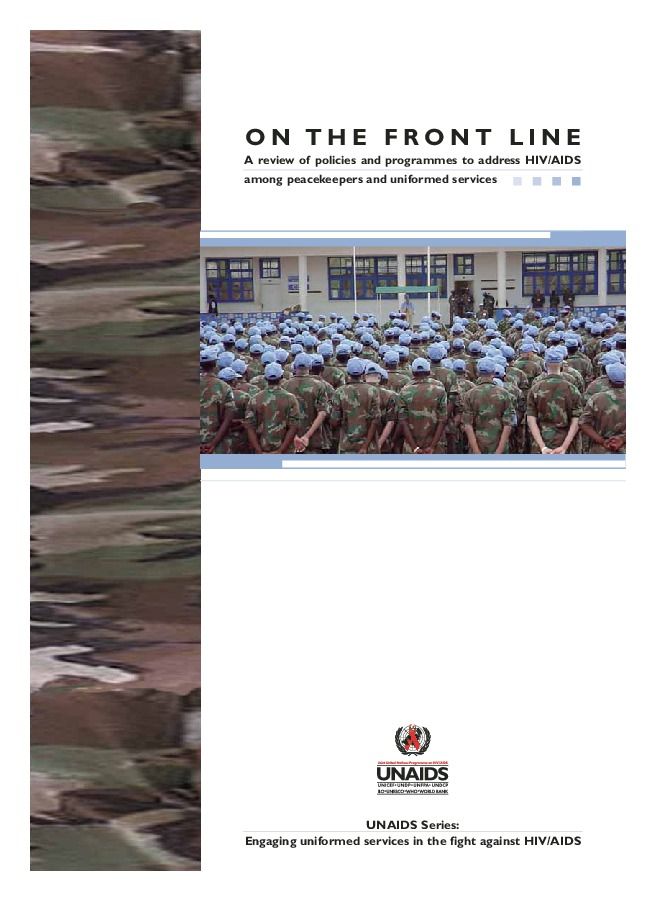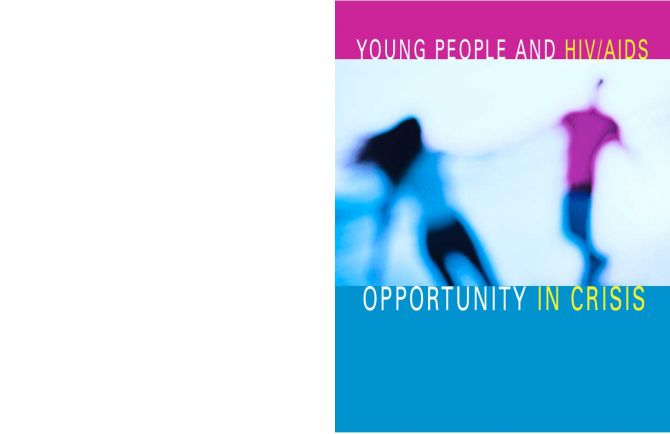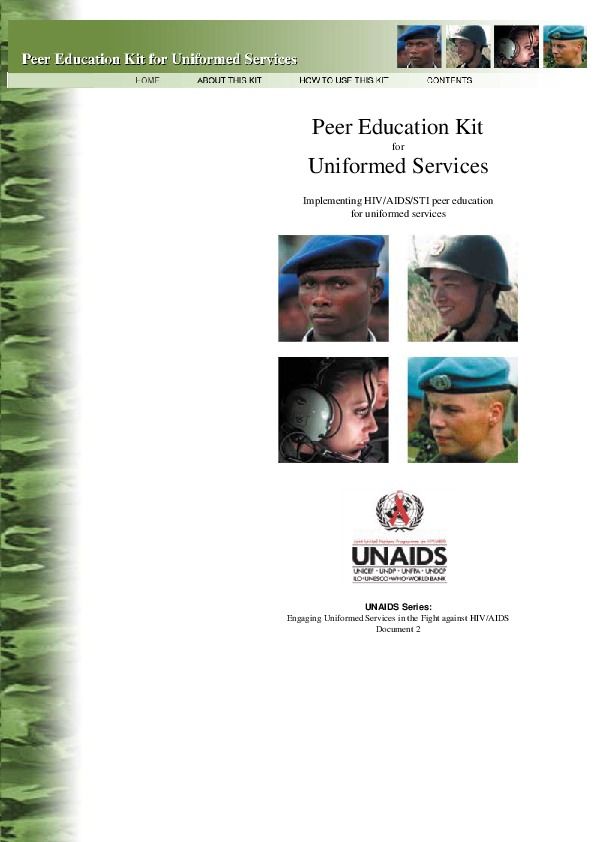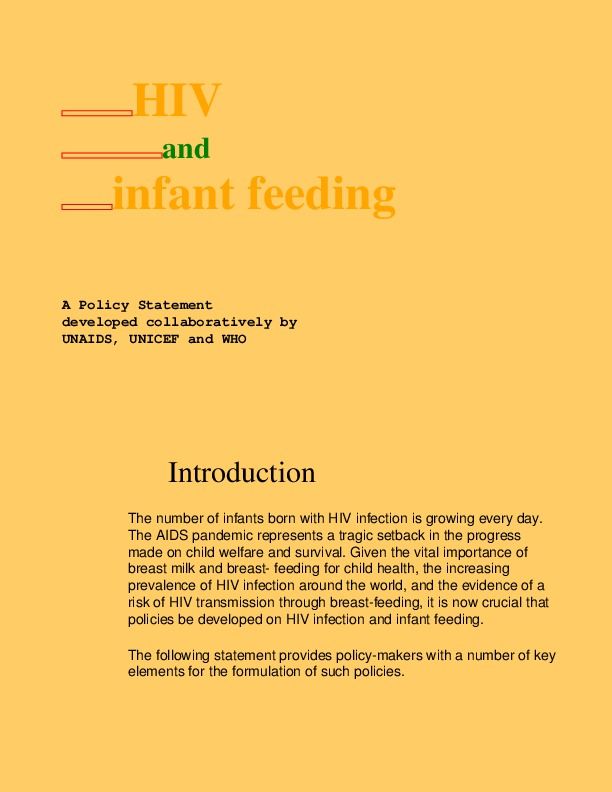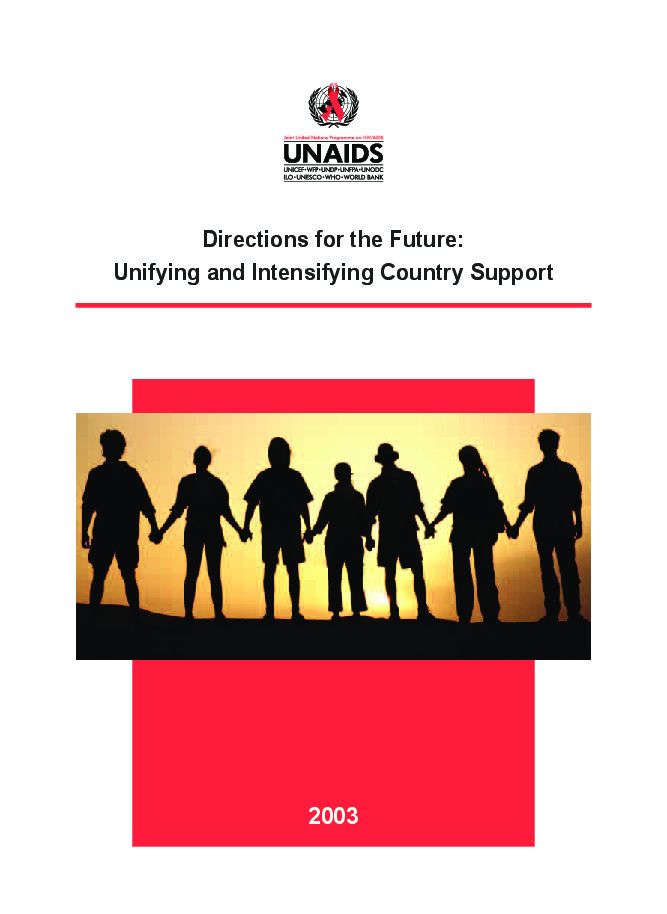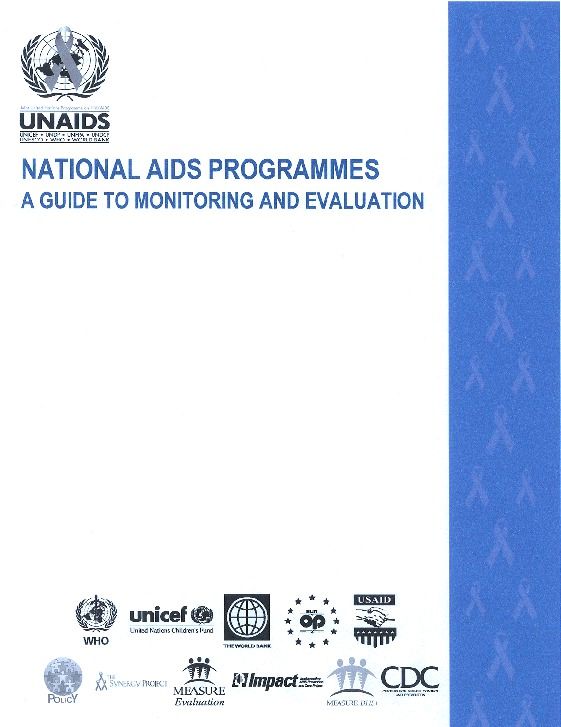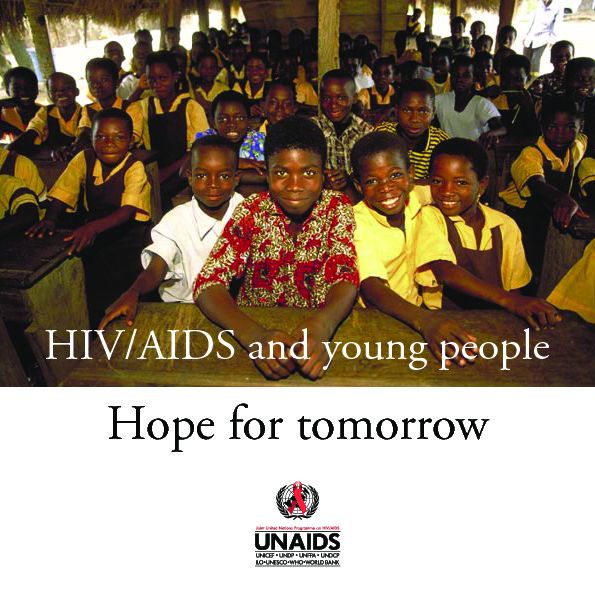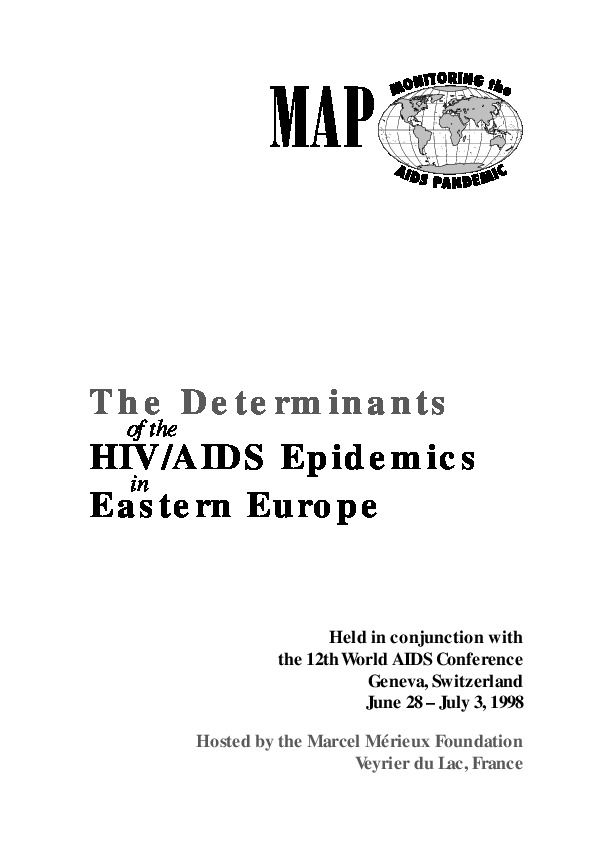Documents
On the front line : a review of policies and programmes to address HIV/AIDS among peacekeepers and uniformed services
01 October 2003
This paper is a desk review of policies and programmes being undertaken to address AIDS among the uniformed services around the world. It provides an overview of the actions taken by the UNAIDS Office on AIDS, Security and Humanitarian Response (SHR) to support countries in meeting their commitments.
Documents
Young people and HIV/AIDS : Opportunity in crisis
07 October 2003
This report contains important new data about why young people are key to defeating the global HIV/AIDS epidemic, including results from more than 60 new national surveys. It reaffirms that we must accord top priority to making investments in the well-being of young people and to engaging them in the fight against HIV/AIDS.
Documents
HIV and infant feeding : a policy statement developed collaboratively by UNAIDS, UNICEF and WHO
05 November 2003
The number of infants born with HIV infection increases every day. The vast majority of these children are infected through their mothers. Given the vital importance of breastfeeding to a child’s health, and the risk of HIV transmission through breastfeeding, the development of policies on HIV infection and infant feeding is crucial. This document provides policy-makers with key elements for the creation of the aforementioned policies, such as promoting and supporting breastfeeding, improving access to HIV counselling and testing, and preventing commercial pressures for artificial feeding. It also highlights the prevention of HIV infection in women through the promotion of safer sex and the adequate treatment of sexually transmitted infections
Documents
Directions for the future: Unifying and intensifying country support
01 December 2003
This document is an operational tool that has been developed by the Country and Regional Support Department (CRD) in order to pursue actions recommended by the PCB. The document provides a comprehensive framework for strategic management. It includes a listing of strategic objectives of the Department, 13 key results to be achieved, priority countries, major activities, monitoring and reporting indicators and the budget of the Department. The overall goal of CRD is to scale up national responses to HIV/AIDS. This document offers a road map for the future directions of CRD in its efforts to achieve that goal.
Documents
A Guide to Monitoring and Evaluation
18 March 2004
Documents
National AIDS programmes : a guide to monitoring and evaluating HIV/AIDS care and support
19 March 2004
This guide aims to support national AIDS programme managers in monitoring and evaluating public and private care and support programmes for HIV/AIDS. As more governments move towards increasing access to prophylactic and long-term treatment and care, such a guide will contribute to a global process of assessing whether care and support programmes are developed and implemented well.
Documents
HIV/AIDS and young people : hope for tomorrow
23 March 2004
“Young people are the key in the fight against AIDS. By giving them the support they need, we can empower them to protect themselves against the virus. By giving them honest and straightforward information, we can break the circle of silence across all society. By creating effective campaigns for education and prevention, we can turn young people’s enthusiasm, drive and dreams for the future into powerful tools for tackling the epidemic.” - Kofi Annan, United Nations Secretary-General

